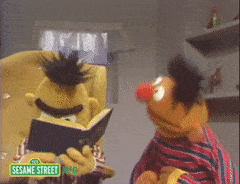Good luck happens when preparedness meets opportunity. - Bret Harte
The more interviews I read and wine seminars I attend; the more it seems that non-interventionist winemaking is the over riding zeitgeist of the moment. Every other sentence is “…letting the vineyard speak”, “…showcasing the fruit”, “….creating natural wines”, “…nothing added, unfiltered, unfined” Looking back at tech sheets I’ve written on our wines, and if such a thing existed, transcriptions of speeches I’ve given, there would probably be an ample sprinkling of those phrases to be found. I too shied away from stating that the wines we make here come from the cellar as well as the vineyard. There seems to be some fear of conveying the idea that winemakers actually do anything. I’ve even heard prideful declarations of just putting grapes in a tank, sitting back and seeing what happens.
Well, that’s all fine and good, but I've recently learned to stop worrying about imprinting my personality on my wines and love the craft of making wine again. I firmly believe that great wine is by no means a simple product of entropy. It is attained through determination, skill, guile and the type of luck that pioneer poet Bret Harte was talking about. Michelangelo said that every block of stone has a statue inside of it, the sculptur is simply tasked with finding it. True as that may be, to me the prisoners were interesting to look at, but David was trancendent. The complete unveiling of that which is hidden in the raw material is the gift of the talented and engadged artist. In this way, winemaking approximates art and craft. The vineyard and cellar crew here just spent three straight months working 12+ hour days. Backs are strained, hands are cracked, and boots are worn thin and letting water in. Exhaustion has set in, immune systems are on empty, and there is still work to be done. If non-intervention is the answer, what the hell have we been doing to ourselves? Maybe we could just ship some grapes in a jar and everyone would be happy?
A full description of all the decisions and actions taken during harvest would be quite a tome. If anyone out there is willing to give me an advance on publishing a cellar masterwork like that, please feel free to email me. But since we are using the quick read blog format here, I’ll just touch on one aspect of winemaking, the actual making of the wine.
Those responsible for the physical creation of wine are little single celled creatures called yeast. They perform the alchemical magic of turning sugar to alcohol. The friend of the non-interventionist winemaker is “native yeast”. Here is a video clip of me recently over hearing someone going on and on about the grandeur of native yeast.

I'm not against native yeasts in theory, but in practice here in Paso Robles, something seems a bit off. First, our vineyard and winery is located on what was an oak and manzanita covered hill just 12 years ago. It seems a bit disingenuous to speak of some native culture of yeast that exists here. Much like the cloned vines planted in perfect rows in the vineyard, whatever yeast may be here is a recent transplant to the area. If this vineyard and winery are still here in 50-60 years, then well, maybe we could have something interesting to call our own.
Secondly, inoculating with different yeasts is analogous to having more options in the spice rack. Sure, you might grow some amazing oregano in your home garden, but if that's all that's added to every dish you make, things get a bit repetitive. Each vintage, I make 30-40 different wines from about 15 different varietals. Each varietal and style of wine needs to be treated and prepared in a unique way in order to exemplify the varietal characteristics and stylistic goals. Of course, if your stylistic goal is "Hey, let's see what happens this year", I guess that native route is cool. It just seems to me that using a single dominant yeast that lives in the cellar could work great in a place where you make a single field blend wine, but seems a bit unnecessarily limiting in my case.
I've got nothing against natural winemaking, just as I have nothing against natural medicine and the like. It help to be reminded of the roots of our profession and the basic ideas upon which this craft is based. But it seems that much natural winemaking is rooted in being a response to large scale factory winemaking. An attempt to reintroduce soul and personality in a world where such things are being slowly taken from us via targeted marketing and focus groups. But when you counter dogmatic approaches with a new dogmatic approach, you sadly come full circle to a place of limited opportunity and expression. I’m not afraid to admit that we have progressed many ideas and techniques in winemaking that were not around 100, 50, even 10 years ago. And I’m not about to throw the baby out with the bathwater to go back to some romanticized “good old days” that never really existed. Well, at least until my back get’s a bit older and I start looking for a way to explain why I don’t want to work as hard as I just did this harvest.